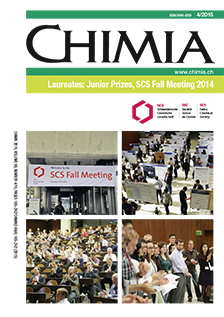Functionalised Clathrochelate Complexes – New Building Blocks for Supramolecular Structures
DOI:
https://doi.org/10.2533/chimia.2015.191Keywords:
Clathrochelate complexes, Metalloligands, Palladium, Self-assemblyAbstract
Tris(dioxime) iron(II) clathrochelate complexes functionalised with 3- and 4-pyridyl groups have been employed as building blocks in the preparation of supramolecular structures by coordination-driven self-assembly. These complexes possess a number of desirable characteristics, being straightforward to synthesise and offering ample opportunity for steric and functional modification. Clathrochelate-based 4,4'-bipyridyl metalloligands from 1.5 nm to 5.4 nm in length were prepared in up to two steps and their potential as building blocks for supramolecular architectures demonstrated through the preparation of a discrete molecular square and a three dimensional (3D) coordination polymer. Furthermore, the structure-directing capability of clathrochelate building blocks was illustrated through the synthesis of octahedral cage compounds, which are capable of encapsulating the large, hydrophobic BPh4– anion in aqueous solvent mixtures.Downloads
Published
2015-04-29
How to Cite
[1]
M. D. Wise, K. Severin, Chimia 2015, 69, 191, DOI: 10.2533/chimia.2015.191.
Issue
Section
Scientific Articles
License
Copyright (c) 2015 Swiss Chemical Society

This work is licensed under a Creative Commons Attribution-NonCommercial 4.0 International License.







